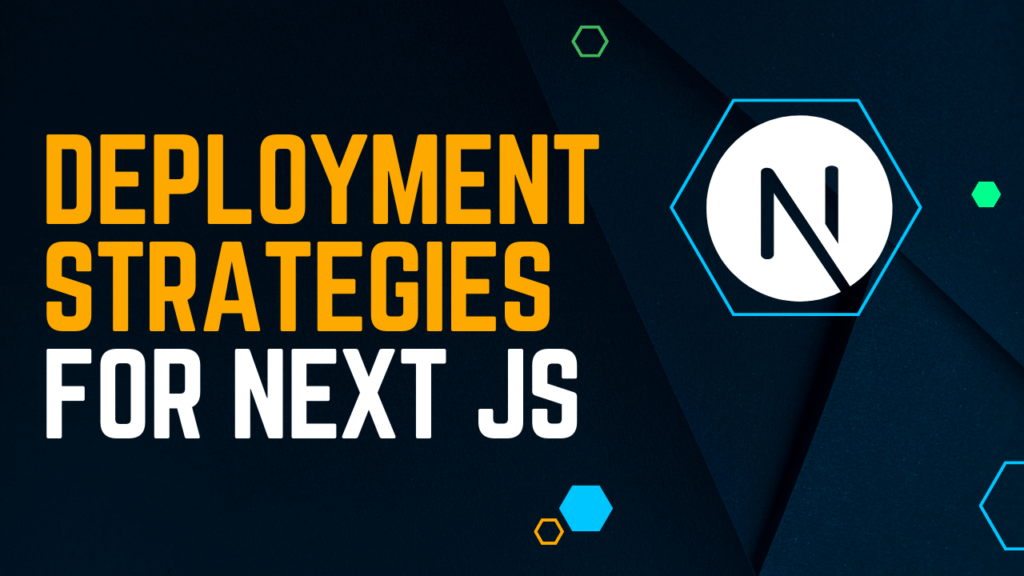Introduction:
Deploying a Next.js application is a crucial step in bringing your web project to life. With the ever-expanding landscape of deployment options, selecting the right strategy can be a daunting task. In this blog post, we’ll explore the factors to consider and the various deployment strategies available for Next.js applications, helping you make an informed decision that aligns with your project’s requirements.
Understanding Next.js:
Before we dive into deployment strategies, it’s essential to grasp the basics of Next.js. Next.js is a React framework that provides server-side rendering (SSR) and static site generation (SSG) out of the box. This means your application can be rendered both on the server and statically, improving performance and SEO.
Factors to Consider:
- Traffic and Scale:
- Analyze the expected traffic and scalability requirements of your application. High-traffic sites may require different deployment strategies than smaller projects.
- Dynamic vs. Static Content:
- Determine whether your content is mostly dynamic or static. Static content can often be served through content delivery networks (CDNs), while dynamic content may require server-side rendering.
- Database and State Management:
- Consider your database and state management choices. Some deployment options work better with specific databases and state management solutions.
- Development Team’s Expertise:
- Evaluate your development team’s expertise with different deployment technologies. Choosing a technology your team is familiar with can streamline deployment.
- Cost:
- Calculate the cost associated with each deployment strategy. Some solutions may be more cost-effective for your project.
Deployment Strategies for Next.js:
- Vercel (Recommended):
- Vercel is the creators of Next.js, and it offers a seamless deployment experience. It’s optimized for Next.js applications and provides features like serverless functions, automatic SSL, and easy domain management.
- Traditional Hosting (e.g., AWS, DigitalOcean, Heroku):
- You can deploy Next.js on traditional cloud hosting providers. This option provides more control but may require more configuration.
- Serverless Deployments (e.g., AWS Lambda, Netlify Functions):
- Serverless deployments are a cost-effective choice for smaller applications. You can deploy your Next.js application as serverless functions that automatically scale with traffic.
- Static Site Generation (SSG) with CDN:
- For mostly static content, you can generate your site statically using Next.js and deploy it on a content delivery network (CDN). This approach offers exceptional performance and scalability.
- Docker Containers:
- If you prefer containerization, you can package your Next.js application into Docker containers and deploy them using container orchestration tools like Kubernetes.
Choosing the Right Deployment:
- For Small to Medium Projects:
- Vercel or a serverless deployment (e.g., Netlify) are excellent choices. They provide simplicity and scalability without the complexity of managing servers.
- For Large and Complex Projects:
- Consider traditional cloud hosting like AWS or Azure, which offers more control over infrastructure. Containerization with Docker can also be a good fit for complex applications.
- For Static Content:
- SSG with a CDN is a winning combination for applications with predominantly static content. It ensures fast loading times and global accessibility.
- For Server-Side Rendering (SSR):
- If your application relies heavily on SSR for dynamic content, Vercel or a serverless deployment with SSR capabilities can be your best bets.
Conclusion:
Selecting the right deployment strategy for your Next.js application is a critical decision that can impact performance, scalability, and development workflow. By considering factors such as traffic, content type, team expertise, and cost, you can make an informed choice that aligns with your project’s needs.
Remember that there is no one-size-fits-all solution. The best deployment strategy for your Next.js application depends on your specific requirements and objectives. Whether you opt for Vercel’s seamless experience, traditional hosting, serverless deployments, or other options, the goal is to ensure your Next.js application reaches its full potential in terms of speed, reliability, and user experience in the vast and dynamic landscape of the web.

